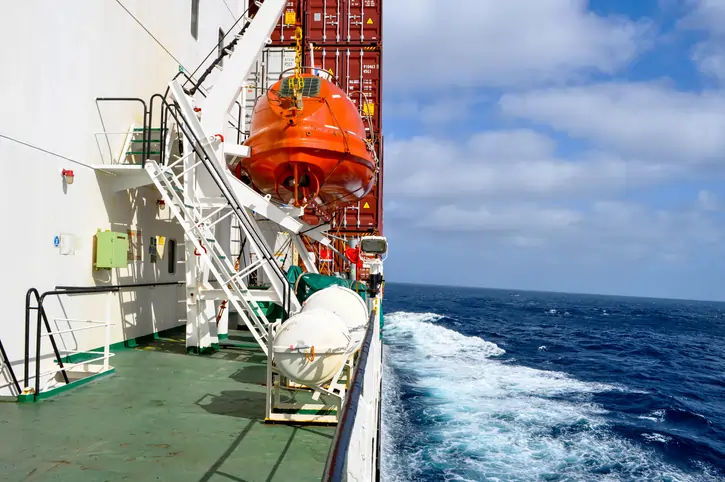
For over 20 years, Bloom Energy has been powering important resources on land. Now, it aims to expand its clean energy to the sea. The global shipping industry is essential to modern life, moving nearly 80% of the world’s trade across more than 50,000 merchant ships. With that comes many challenges. The marine sector remains heavily reliant on carbon-intensive fuels like bunker oil and diesel, and emissions are expected to rise dramatically—even as the rest of the world works to meet climate goals.
Bloom Energy is stepping up to meet this challenge by using its innovative solid oxide fuel cells to power ships. Bloom’s modular, fuel-flexible marine platform can offer significant carbon emissions reductions for the marine transport industry.
Cleaner Ships, Starting Now
The International Maritime Organization (IMO) has set clear targets: reduce carbon intensity by 40% by 2030 and reach zero emissions before 2100. But traditional power solutions can’t get us there. That’s why Bloom has developed a fuel cell platform specifically for marine use, delivering cleaner auxiliary power for ships today—and offering a path to decarbonize the industry over the long haul.
Bloom’s fuel cells generate electricity through an electrochemical reaction—not combustion. This means no methane slippage, fewer harmful emissions, and higher efficiency. Bloom recently used this technology on its first major marine deployment—aboard the MSC World Europa, a luxury cruise ship built by Chantiers de l’Atlantique. Bloom’s 150kW solid oxide fuel cell system delivered 60% electrical efficiency while docked in port using liquefied natural gas (LNG), a 30% reduction in carbon emissions compared to traditional high-efficiency systems.
This kind of performance is especially important while ships are docked, where traditional power systems contribute heavily to local pollution. Bloom’s fuel cells help to reduce emissions, meeting regulatory requirements and protecting public health in coastal cities.
Built for the Ocean, Designed for the Future
Decarbonizing marine transport means operating in challenging, ever-changing environments. That’s why Bloom has ruggedized its fuel cell platform to meet the rigorous standards of the sea. Bloom’s systems are built to handle tilt, roll, pitch, vibration, and other variables unique to life onboard a ship. They’ve passed key safety reviews from the American Bureau of Shipping and Bureau Veritas and have been proven effective both at sea and while docked.
Bloom’s technology is ready for more than just today’s fuel mix. Bloom’s marine platform is compatible with LNG, biogas, and hydrogen blends—and can eventually run on green hydrogen or integrate with carbon capture solutions. That means businesses investing in Bloom’s marine systems today won’t face stranded assets tomorrow. The goal is to build ships with long-term sustainability and adaptability in mind.
Charting the Course Ahead
Bloom doesn’t just deliver a product—it’s helping shipbuilders and operators reimagine how vessels are powered. That includes everything from auxiliary hotel loads to full engine-parallel mode during sailing. Bloom is collaborating with partners like Chantiers de l’Atlantique on multi-megawatt installations, scaling up its fuel cell solutions to meet the growing demand for low- and zero-carbon marine energy.
The shipping industry is on a tight timeline to meet international climate targets. With Bloom’s marine-ready fuel cells, shipbuilders and operators don’t have to wait for future breakthroughs—they can start cutting emissions today while building for a cleaner tomorrow.
Choose Bloom for a Cleaner Voyage
The path to a net-zero marine industry is complex—but it’s also filled with opportunities. Bloom Energy is leading the charge with proven fuel cell solutions that deliver immediate environmental benefits and long-term flexibility. Whether your vessels are navigating busy ports or crossing open seas, Bloom is here to help power a more sustainable future.


